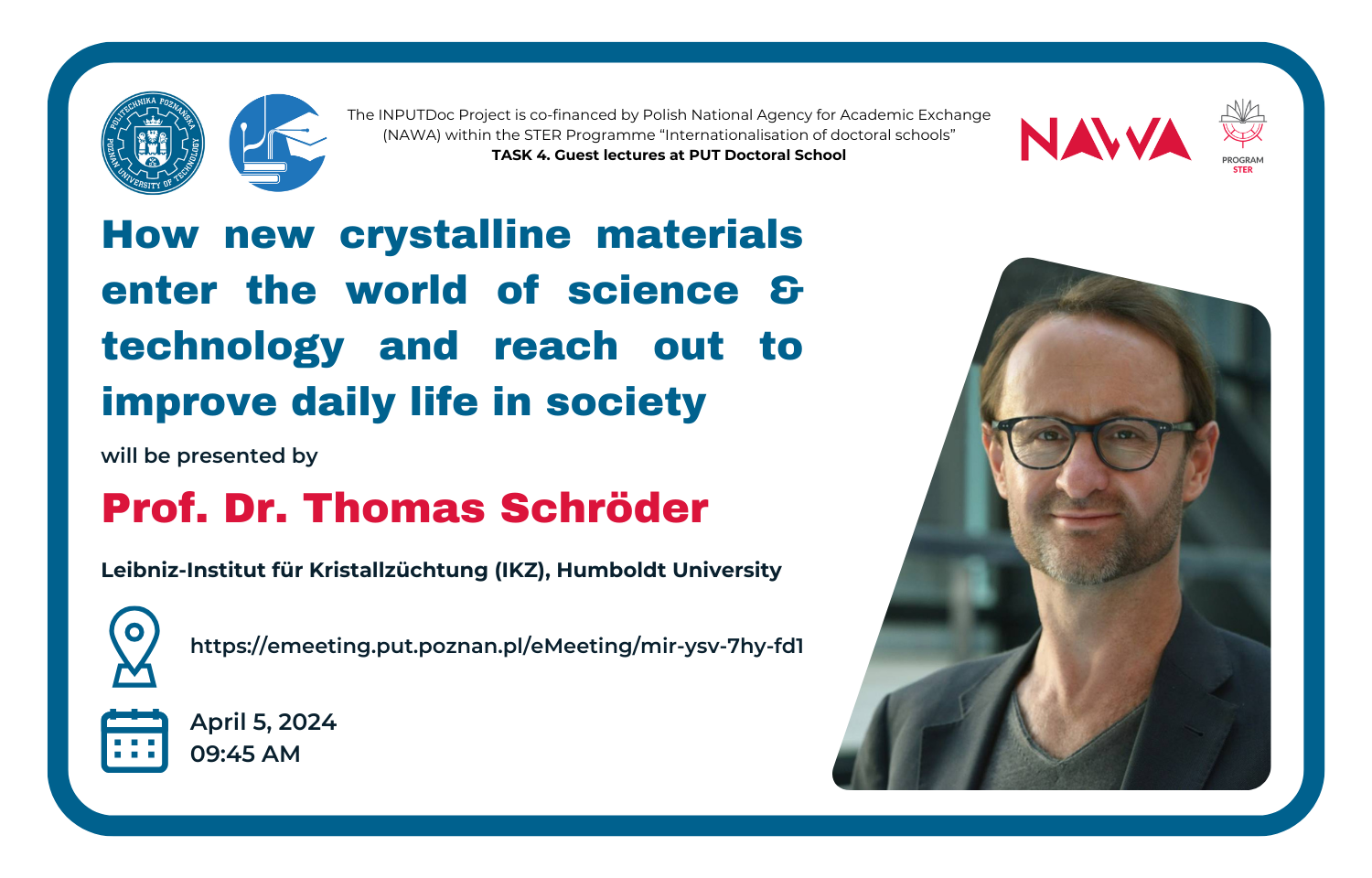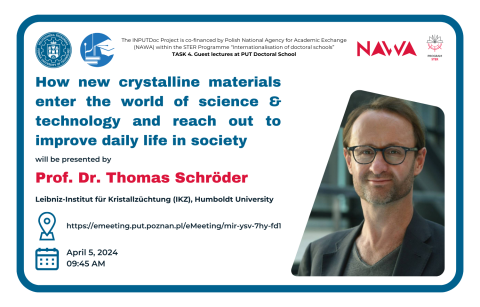
How new crystalline materials enter the world of science & technology and reach out to improve daily life in society
Thomas Schroeder
Leibniz-Institut für Kristallzüchtung, Max-Born-Str. 2, 12489 Berlin
Humboldt Universität zu Berlin, Institut für Physik, Newtonstr.15, 12489 Berlin
The word ´material` derives from the Latin word ´mater` which means ´mother`. Materials are thus at the very origin and beginning of every experimental scientific investigation and technology for society. The importance of materials is also made obvious by the fact that human history is classified by the use of materials (bronze age etc.). Interestingly, progress in materials science scales over centuries with the control of higher and higher temperatures. Today, we live in the Silicon age (~1400 °C) and the Nitrides and Carbides at even higher process temperatures (up to 2300 °C) become increasingly important. Materials quality is of central importance to control physics and technology so that crystals with well controlled properties are of in the focus for basic as well as applied research. Our institute, the “Leibniz-Institut für Kristallzüchtung (IKZ)” in Berlin, is an international state-of-the-art competence center for science & technology as well as service & transfer for innovations in and by crystalline materials. The R&D spectrum ranges from basic over applied research up to pre-industrial development. Crystalline materials are key enabling technology components to provide electronic and photonic solution for challenges in society like communication (e.g. artificial intelligence, quantum technology etc.), climate (e.g. renewable energy, power electronics etc.) as well as health (e.g. laser technologies, UV technologies etc). The IKZ provides innovations in crystalline materials (e.g. III-V like GaAs, InP etc. and group IV like Cz-SiGe and FZ-Si) by its combined in-house expertise on plant engineering, numerical simulations and crystal growth to achieve highest quality crystalline materials with tailored properties. Nanostructures, thin films and volume crystals are investigated with the latter being the unique selling point of the institute. A strong theoretical and experimental materials science is a strong asset for IKZ´ R&D activities. Together with partners (i.e. institutes & industries), the institute also drives innovations by crystalline materials, namely the reliable evaluation of innovative materials for new technologies. Several examples on electronics (AlN, Ga2O3, isotope pure SiGe etc.) and photonics (laser materials, active X-ray optics etc.) will be given in my talk to highlight today´s central R & D activities of international importance.
LINK: https://emeeting.put.poznan.pl/eMeeting/mir-ysv-7hy-fd1
